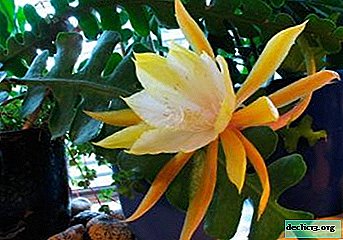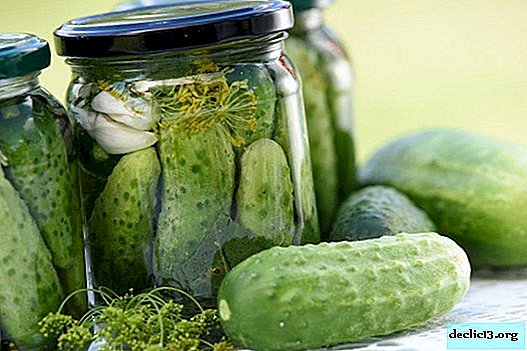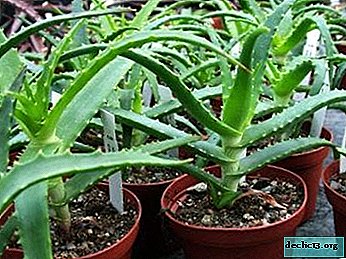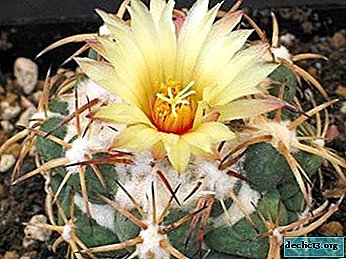How to deal with a spider mite on balsam?

Balsam is a houseplant, which is deservedly popular among amateur gardeners. A variety of shades of inflorescences, lush green foliage are the main features of the subspecies.
The disadvantage of the culture is a high risk of infection with a spider mite. When grown home, ticks multiply rapidly and infect neighboring plants. How to protect balsam from a dangerous insect?
This article talks about the causes of the appearance of the tick, how it looks, as well as about various ways to get rid of this trouble with the help of chemicals and folk remedies and about methods of prevention.
Brief description of the plant
Subspecies refers to perennial crops. Other names are widespread among the people - Vanka wet, Impatiens (due to whimsical conditions of detention). The stem of the balsam is bushy and juicy, the shape of the leaf is oval, the edges have a serrated edging.
The plant blooms from May to December. Inflorescences are distinguished by an irregular shape. Their shade depends on the particular variety: white, yellow, red (also flowers are single and two-tone). The natural habitat of balsam is the subtropics and tropics of Africa and Asia.
What is this pest?
The insect has the smallest size (maximum length - 1 mm). The body shape of the tick resembles an ellipse. Pests live in large colonies, building houses for themselves under clods of earth, under foliage that has fallen into a pot, or on the back of the sheet.
The tick group consists of more than 100 subspecies, the distinguishing feature of which is rapid reproduction. The adult bites off part of the leaf, and then through the hole made, drinks all the juice from it.
REFERENCE! The female tick lives only 15 days, but this time is enough for it to lay on average up to 100 eggs. And newcomers to the clutch appear after 3-4 days.Tick eggs can also remain viable for up to 5 years, hiding in the depths of the stem, in the frame above the pot, in the recesses of the pot.
How to identify?
Detecting a pest on a flower at the initial stage of the disease is a complex process. In most situations, the florist begins to act only after balsam is strongly affected by a tick. Bringing the plant to this state is not recommended, since the only solution to the problem is to destroy the bush (you need to burn the foliage and stem, and throw the pot out).
The pest can be green or brown - this also complicates the recognition process. The female is painted in a bright red tint (notice it much easier).
What other signs can a tick be identified?
- At the first stage, the smallest black dots appear on the foliage - bite marks (the tick begins to suck out the juice through the piercing-sucking mouth apparatus).
- The thinnest film covers the foliage - the web, the bush begins to wither.
- Balsam changes color (instead of saturated green, it turns gray).
- At the last stage, the plant looks like it was doused with boiling water. The foliage falls en masse, the flowers wither.
Mites prefer balsam to all other indoor flowers. Green leaves and succulent stems especially attract these pests. When examining domestic plants, special attention should be paid specifically to balsamine - it is subjected to a dangerous attack first.
Read more about how to recognize diseases and pests of balsam, as well as what are the treatment methods and how to deal with insects, read in our material.
Photo
Next, you can see a photo of the spider mite on balsam:




Why appears on a flower?
Among the main factors that provoke infection are improper conditions of detention and care. High temperature conditions, dry air and soil are the main causes of the appearance of the tick.
A peculiar epidemic for indoor balsam is characteristic at the beginning of the heating season (optimal conditions for mass reproduction appear). Ticks attack flowers weakened by temperature changesas well as plants that get insufficient moisture.
Possible consequences
After 2-3 weeks of infection with a tick, the florist can see characteristic consequences. In their list:
- thin web cobwebs surround the foliage;
- the stem has a bronze-gray hue;
- the flowers wither and fall;
- foliage turns yellow massively (about why indoor balsam leaves turn yellow and how to help him, read here).
Balsam drops all the leaves and stops blooming (about why indoor balsam does not bloom, and only its leaves grow, you can find out here). The flower grower notices the deformation of the bush and stunting. The most dangerous consequence is the death of the plant.
How to get rid of it?
How to deal with spider mites on balsam? The difficulty of the fight lies in the rapid multiplication of pests and their getting used to some chemical preparations. Use indoors allowed Fitoverm. It is safe for people and animals.
The bush should be sprayed several times, the maximum number of repetitions is 3. The time between treatments is from 3 to 7 days (the warmer in the room, the shorter the period). Fitoverm needs to be bred at the rate of 5 ml per 0.5 l of heated water. Repeat spraying until the tick is completely destroyed. If the result is not observed, you need to change the drug.
IMPORTANT! Ticks are not insects, but spiders (they have 8 legs). Therefore, conventional preparations of insecticides against insect pests will not give any effect.To kill ticks, special acaricides will be required.
What acaricides will help in the fight against ticks?
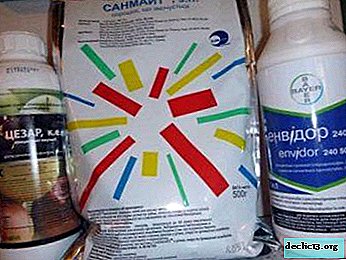 Actellik. Spraying is carried out only with a freshly prepared solution. Ampoules in 2 ml are enough for 2 l of water. See the instructions for more detailed dosage (depending on the size of the plant). Repeat no more than 1 time.
Actellik. Spraying is carried out only with a freshly prepared solution. Ampoules in 2 ml are enough for 2 l of water. See the instructions for more detailed dosage (depending on the size of the plant). Repeat no more than 1 time.- Sunmight. Spray after flowering, carefully process each leaf. 1 g of powder must be diluted in a small volume of water, stirred and added water to obtain 1 liter. Repeat 1 time.
- Apollo Dilute the preparation (1 drop) with 1 liter of water. Spray no more than 1 time. Pinkish spots may remain on the surface of the sheet - this is a normal aftereffect.
All funds presented are prohibited for use in the apartment. Processing should be carried out outdoors or on the balcony (in extreme cases). When using chemicals, be sure to wear protective gloves and a mask.
If there are few bushes, each after spraying should be placed in a plastic bag for a day (leave a small opening for air intake). The poison will be evenly distributed under such conditions, and increased humidity will help kill the pest. An alternative to acaricides is the usual Dichlorvos (use in extreme cases).
The bush under the influence of the drug should be at least 24 hours. A plastic bag should be sprinkled with dichlorvos inside, then put in it a pot of balsam and close. During the day, ticks must die.
It is important to use this method for balsam, which is not very weak (the bush will survive and eventually return to normal). If you can’t get rid of the pests, and obvious lesions are visible on the bush, it is better to get rid of the plant.
Folk methods
The flower should be abundantly watered with plain water and covered with plastic wrap for 2-3 days. A humid and warm environment will help kill insects. With this method, it is important to remove the pot from direct sunlight, so as not to burn the plant.
Among other options, the following are distinguished.
- Garlic composition. Grind 150 g of cloves, fill with water (1 l) and leave for 8 hours. Dilute the resulting solution in a proportion of 5 ml per 1 liter of water and treat the bush daily. Instead of garlic, you can use onions, dilution with water in this recipe is not required.
- Take the roots of dandelion (20 g), pour them with boiling water (1 l). After cooling, insist a day. Spray balsam 2 times a day.
Prevention
The spider mite does not tolerate moisture and low air temperature. The pest does not start on bushes that stand on cool windows. Regular spraying with clean water is an important measure to minimize infection.
In the summer, pots with balsam should be taken outside (or onto the balcony). For prevention, the plant should be sprayed once every 3 months with a weak solution of Fitoverm (2 ml per 1 liter of water).Other preventative measures include the following:
- Timely removal of the affected parts of the flower.
- Processing foliage with soapy water (2-3 times a month).
- Proper care (observing the temperature regime, if the apartment is hot - put the pot on the window).
- Clean up fallen leaves regularly and pick faded flowers.
So, in the list of factors provoking the development of the spider mite - dry air and lack of moisture. To prevent the appearance of the pest, it is important to spray the plant, take a shower weekly (at the initial stage of the tick, you can simply rinse it off with water). Having noticed the first signs, break off the affected leaves and treat the bush with chemicals.

 Actellik. Spraying is carried out only with a freshly prepared solution. Ampoules in 2 ml are enough for 2 l of water. See the instructions for more detailed dosage (depending on the size of the plant). Repeat no more than 1 time.
Actellik. Spraying is carried out only with a freshly prepared solution. Ampoules in 2 ml are enough for 2 l of water. See the instructions for more detailed dosage (depending on the size of the plant). Repeat no more than 1 time.


